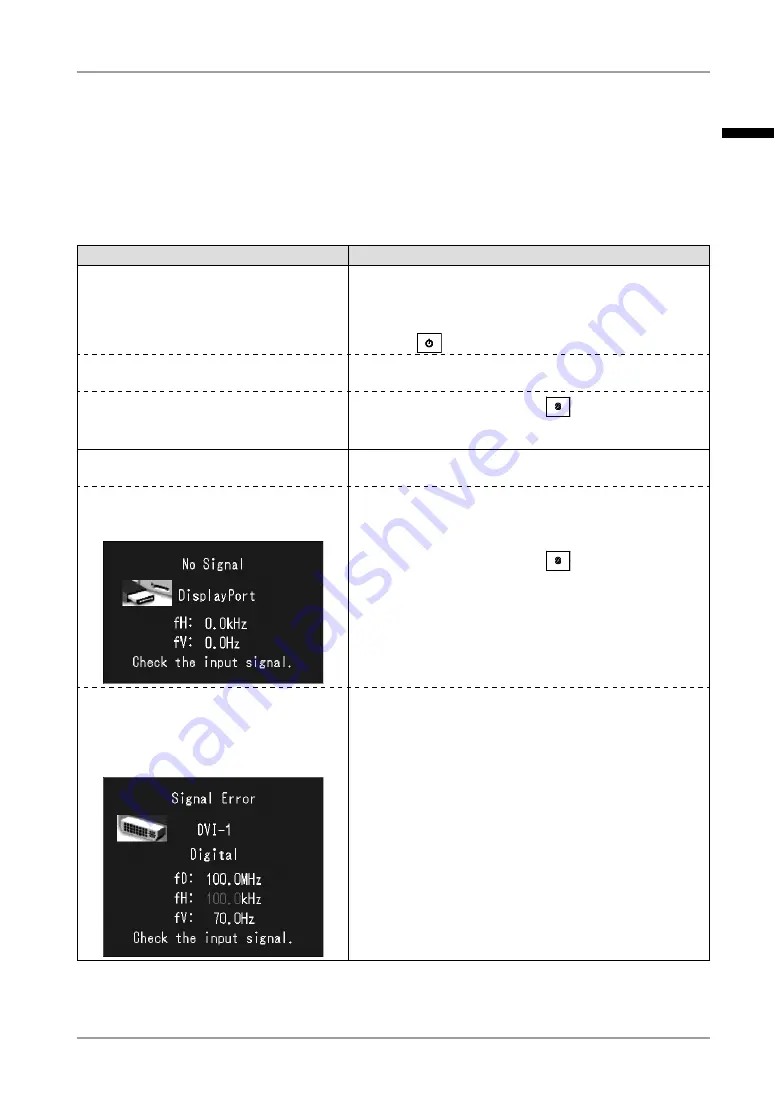
Chapter 4 Troubleshooting
Chapter 4 Troubleshooting
If a problem still remains after applying the suggested remedies, contact your local dealer.
No-picture problems → See No.1 - No.2.
Imaging problems (digital input) → See No.3 - No.8.
Imaging problems (analog input) → See No.3 - No.12.
Other problems → See No.13 - No.16.
Problems
Possible cause and remedy
1. No picture
Power indicator does not light.
•
Check whether the power cord is connected correctly.
Turn off the main power, and then turn it on again a
few minutes later.
Turn the main power switch on.
Press
.
•
•
•
•
Power indicator lights blue.
•
Set each adjusting value in [Brightness], [Contrast]
and [Gain] to higher level. (page 25, 27)
•
Power indicator lights orange.
•
Switch the input signal with
.
Operate the mouse or keyboard.
Check whether the PC is turned on.
•
•
•
2. The message below appears.
This message appears when the signal is not input
correctly even when the monitor functions properly.
This message appears when no signal
is input.
Example:
•
The message shown left may appear, because some
PCs do not output the signal soon after power-on.
Check whether the PC is turned on.
Check whether the signal cable is connected properly.
Switch the input signal with
.
•
•
•
•
The message shows that the input
signal is out of the specified frequency
range. (Such signal frequency is
displayed in red.)
Example:
•
Check whether the signal setting of your PC matches
the resolution and the vertical frequency settings
for the monitor. (refer to the Setup Manual “Setting
Screen Resolution”)
Reboot the PC.
Select an appropriate display mode using the
graphics board’s utility. Refer to the manual of the
graphics board for details.
fD : Dot Clock
(Displayed only when the digital signal inputs)
fH : Horizontal Frequency
fV : Vertical Frequency
•
•
•
•
•
•
•
English
















































